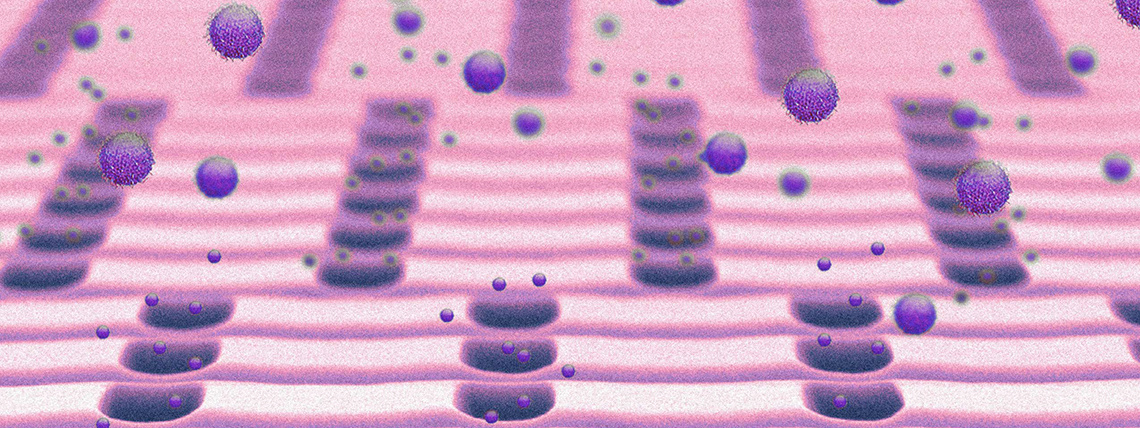The articles of the current edition are available on the new site.

The nanoscale represents everything that has a dimension between 1 and 100 nanometres (from the atom up to the size of a virus), but in some cases even this term is not sufficient to define certain phenomena. This is what emerges from the work that Dr. Alessandro Grattoni, a graduate and PhD of the Politecnico di Torino, and currently director of the Department of Nanomedicine at the Houston Methodist Research Institute (HMRI) in Houston. Dr. Grattoni recently published in Nature Communications (G. Bruno et al., 2018; https://rdcu.be/MJyr), together with researchers from the Politecnico di Torino and from Rice University in Houston (Texas), presenting a study on ever-smaller nanochannels, down to the ultra-nanoscale.
The team of researchers has discovered a new molecular transport phenomenon present only at the ultra-nanoscale defined by dimensions below 5 nm. At this scale, classical physics begins to merge with quantum physics, generating unique interactions between molecules and atoms.
At these dimensions, the diffusion of molecules is clearly and unexpectedly reduced 10 to 100 times. Making the phenomenon even more interesting is the unusual behaviour of neutral molecules, which cross silicon nanochannels with a diffusive process as if they possessed an electric charge.
Contributing to the study for the Politecnico di Torino were Giacomo Bruno, who was recently awarded a joint research PhD from the Politecnico di Torino and from HMRI, and Nicola Di Trani, a recent graduate in Biomedical Engineering at the Politecnico di Torino, who prepared his thesis at HMRI. In addition, the researcher Giancarlo Canavese of the Department of Applied Sciences and Technology and Professor Danilo Demarchi of the Department of Electronics and Telecommunications also took part. For Rice University, Professor Alberto Pimpinelli from the Department of Materials Science and NanoEngineering and Rice Quantum Institute made a contribution.
This new transport phenomenon, not foreseen by the current mathematical models, can be exploited for all activities that require great precision in the separation of molecules or ions, such as water desalination, organic fluid analysis or biobatteries. Also, medicine can benefit from it: for many years, in fact, in the team of Dr. Grattoni and Dr. Mauro Ferrari, a pioneer of nanotechnology applied to medicine, recently assisted also by researchers from the Politecnico, several implantable devices are being developed with nanochannels for the release of drugs. These implants, which provide absolute control of the dispensed doses, will provide patients with a better response in many diseases such as breast cancer, hypertension or in the case of hormone replacement therapy.
In the image: a SEM micrograph of a section of the membrane with the addition of stylized particles that pass and disseminate through the channels